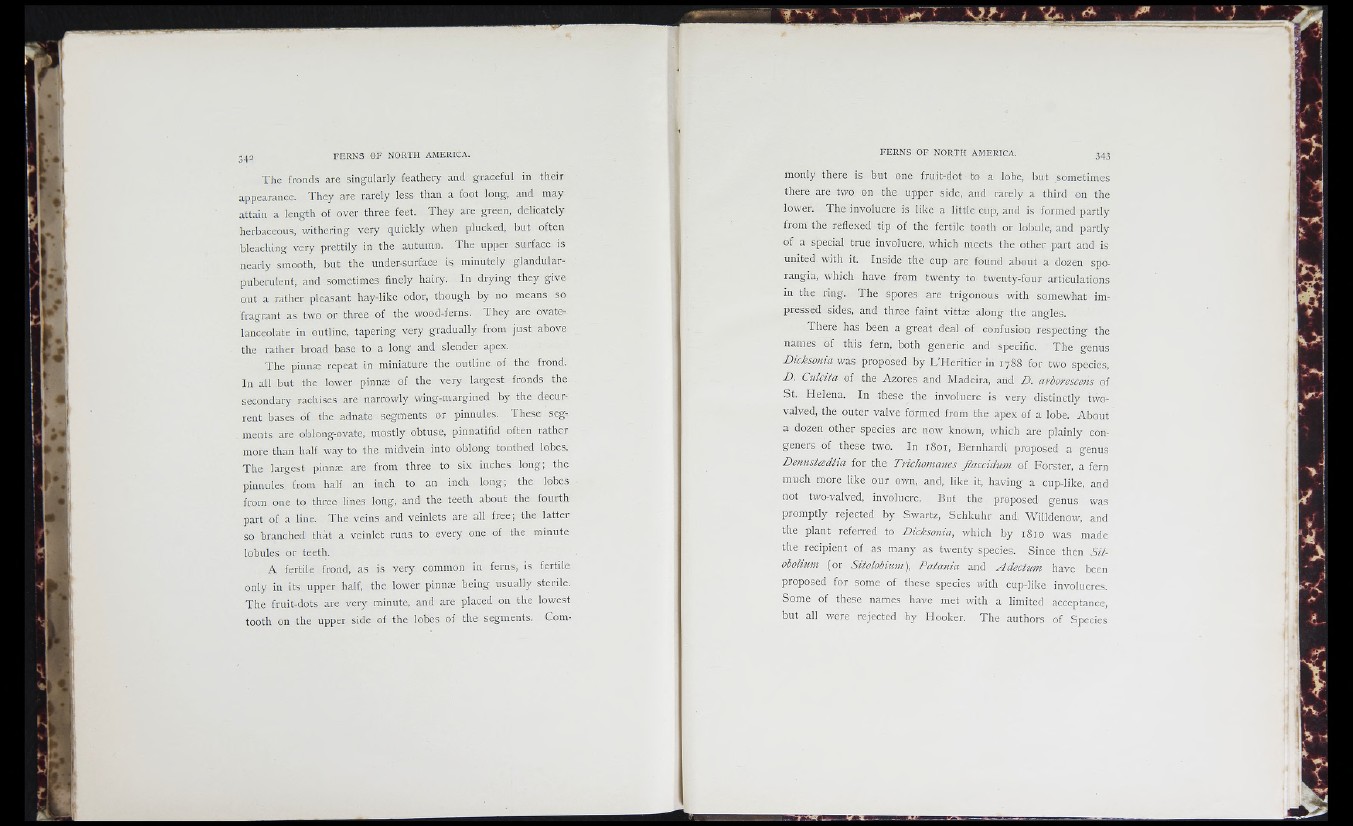
■1
• i
> 1
!«.*
U
r
r
V
\ i
The [ronds are singularly feathery and graceful in their
appearance. They are rarely less than a foot long, and may
attain a length of over three feet. They are green, delicately
herbaceous, withering very quickly when plucked, but often
bleaching very prettily in the autumn. The upper surface is
nearly smooth, but the under-surface is minutely glandular-
puberulent, and sometimes finely hairy. In drying they give
out a rather pleasant hay-like odor, though by no means so
fragrant as two or three of the wood-ferns. They are ovatelanceolate
in outline, tapering very gradually from just above
the rather broad base to a long and slender apex.
The pinnæ repeat in miniature the outline of the frond.
In all but the lower pinnæ of the very largest fronds the
secondary rachises are narrowly wing-margined by the decurrent
bases of the adnate segments or pinnules. These segments
arc oblong-ovate, mostly obtuse, pinnatifid often rather
more than half way to the midvein into oblong toothed lobes.
The largest pinnæ are from three to six inches long; the
pinnules from half an inch to an inch long; the lobes
from one to three lines long, and the teeth about the fourth
part of a line. The veins and veinlets are all free; the latter
so branched that a veinlet runs to every one of the minute
lobules or teeth.
A fertile frond, as is very common in ferns, is fertile
only in its upper half, the lower pinnæ being usually sterde.
The fruit-dots are very minute, and are placed on the lowest
tooth on the upper side of the lobes of the segments. Commonly
there is but one fruit-dot to a lobe, but sometimes
there are two on the upper side, and rarely a third on the
lower. The involucre is like a little cup, and is formed partly
from the reflexed tip of the fertile tooth or lobule, and partly
of a special true involucre, which meets the other part and is
united with it. Inside the cup are found about a dozen sporangia,
which have from twenty to twenty-four articulations
in the ring. The spores are trigonous with somewhat impressed
sides, and three faint vittæ along the angles.
There has been a great deal of confusion respecting the
names of this fern, both generic and specific. The genus
Dicksonia wzs proposed by L ’Heritier in 1788 for two species,
D. Culcita of the Azores and Madeira, and D. arborescens of
St. Helena. In these the involucre is very distinctly two-
valved, the outer valve formed from the apex of a lobe. About
a dozen other species are now known, which are plainly congeners
of these two. In i8oi, Bernhardi proposed a genus
Dennstccdtia for the Trichomanes flaccidum of Forster, a fern
much more like our own, and, like it, having a cup-like, and
not two-valved, involucre. But the proposed genus was
promptly rejected by Swartz, Schkuhr and, Willdenow, and
the plant referred to Dicksonia, which by 1810 was made
the recipient of as many as twenty species. Since then Sit-
obolimn (or Sitolobium), Patania and Adectum have been
proposed for some of these species with cup-like involucres.
Some of these names have met with a limited acceptance,
but all were rejected by Hooker. The authors of Species